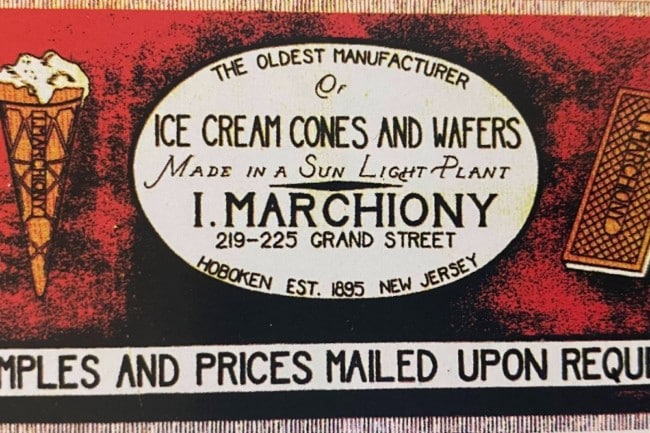Everyone shares a childhood memory of sunburns and sticky fingers with ice cream melting down a cone, licked up with messy-faced grins between giggles. But who had the idea for the ice cream cone that has become synonymous with summertime fun? That distinction goes to Hoboken’s own Italo Marchiony in a tale as surprising as it is delicious. That’s right, the inventor of the ice cream cone was from Hoboken. Read on to learn all about Italo Marchiony, the emperor of ice cream and the inventor of the ice cream cone.
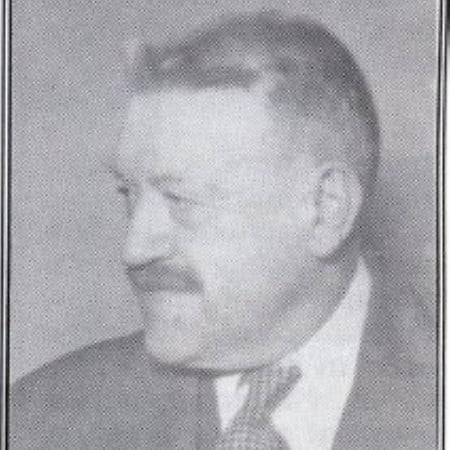
(Photo credits: Hoboken Historical Museum)
The Hokey-Pokey Is What It’s All About!
Italo Marcioni emigrated to the United States in 1895 and Americanized his name to Marchiony. He settled in Hoboken but sold ice cream from a pushcart across the river on Wall Street. Americans often referred to Italian vendors as “hokey-pokey men,” because they shouted Ecco un poco — translated as, “Here’s a little!”
At the time, merchants like Italo served ice cream in little glass dishes, which would be returned to the vendor — but this quickly proved problematic. Wall Street traders often wandered off with the cups, or the glasses would break easily. Tired of loss and breakage, Italo devised a system to serve his ice cream in edible cups.
By 1896, Italo spent each night experimenting with waffle-making in his family’s Hoboken kitchen. He soon discovered that before the newly baked waffles fully cooled, he could fold the warm waffles into little cups. Convenient, sanitary, and tasty, the waffle cups were an instant success.
Read More: Unique Ice Cream Spots in Hoboken + Jersey City
Mass Popularity Leads to Mass Production
Soon, Italo’s cups were so popular he couldn’t keep up with demand. His enterprise had been whipped into a chain of 45 carts and sprinkled over Manhattan, but the hand-made cups were too slow to assemble for all the eager customers. With a mind as adept for mechanics as it was for business, Italo soon adapted the design of a waffle iron and patented a device which could mass produce ice cream cups. Filing his patent in 1902, it was awarded in 1903, and by 1904, a fleet of horse-drawn wagons supplied retailers all over the metropolitan area.
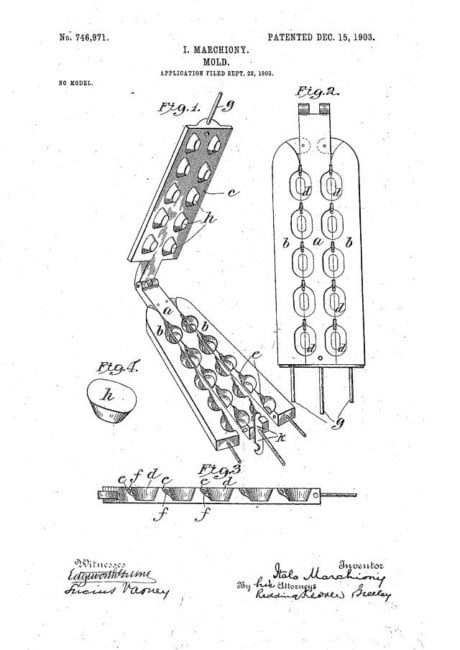
(Photo credits: Hoboken Historical Museum)
The Sunlight Plant
In 1904, Italo opened his ‘Sunlight Plant’ at 223-225 Grand Street in Hoboken where he manufactured ice cream cones and wafers.

(Photo credits: Hoboken Historical Museum)
Because some adults felt undignified licking ice cream from a cone, Italo developed ice cream sandwiches in wafers formed to look like clam shells, fish, or bananas — as well as simple rectangles.
The Great Cone Hoax
According to legend, serving ice cream from an edible dish originated at the St. Louis World’s Fair in 1904. In this fable, a concessionaire named Arnold Fornachou ran short of paper cups — and noticed he was situated next to a waffle vendor named Ernest Hamwi, who sold Arnold some of his waffles, and Arnold rolled the waffles into cones to hold the ice cream.
However, the popularity of the 1904 St. Louis World’s Fair has made for a peculiar legacy: a cacophony of phony food origin myths. The hamburger, hot dog, peanut butter, iced tea, club sandwich, and cotton candy have all been alleged to have been invented at the 1904 World’s Fair, while in actuality, none of them were. Likewise, Italo had already filed a patent 2 years before the 1904 World’s Fair, and at the time of the fair, Italo ran an operable Hoboken manufacturing plant for his ice cream waffles. According to Italo’s daughter, Jane Marchiony Paretti, the invention of the ice cream cone was falsely attributed to Arnold and Ernest. In reality, Italo had filed the patent 2 years earlier and the experiments within his Hoboken kitchen made him uniquely privy to the process of molding waffles while they were still warm, allowing them to set as they cooled. Therefore, it was Italo — who also exhibited his waffle cups at the 1904 World’s Fair — who’d run out of his pre-made, Hoboken-manufactured waffles and improvised by rolling and molding the warm waffles just as he’d done in his Hoboken kitchen.
See More: A Guide to the Ice Cream Shops of Essex County
The success of Italo’s cones at the 1904 World’s Fair popularized ice cream cones, which then spread across America like droplets dripping from the bottom of his cones. Italo returned to Hoboken where he continued manufacturing ice cream cones for the next 34 years.
In 1935, tragedy struck when Italo’s ‘Sunlight Factory’ burnt down.
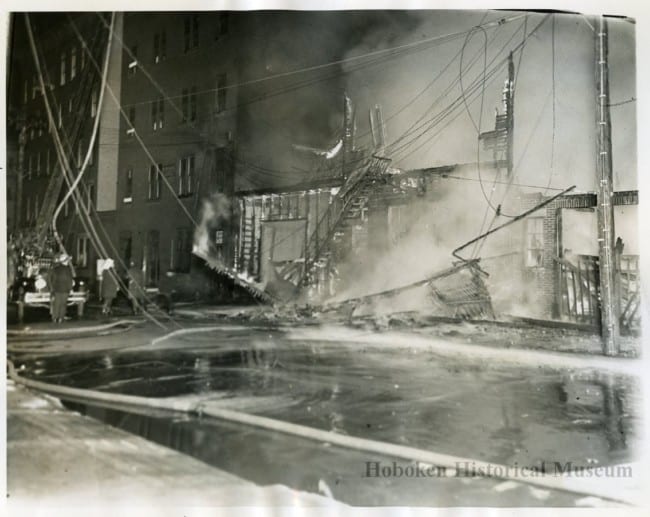
(Photo credits: Hoboken Historical Museum)
Italo rebuilt the factory before retiring at the age of 70, selling the business to Schrafft’s candy company, and he died in 1954 at the age of 86.
In all those years, the emperor of ice cream proudly advertised both his cones and his city: “THE OLDEST MANUFACTURER OF ICE CREAM CONES AND WAFERS: HOBOKEN EST. 1895.”
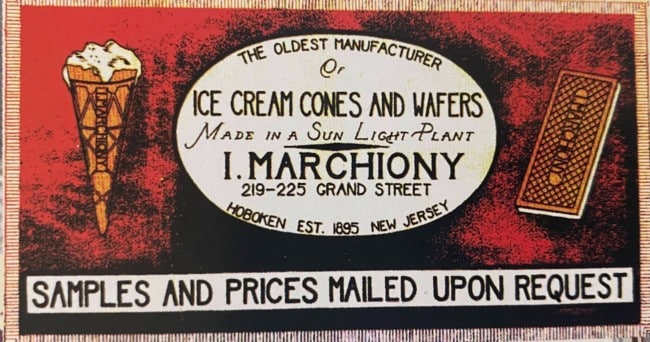
(Photo credits: Hoboken Historical Museum)

